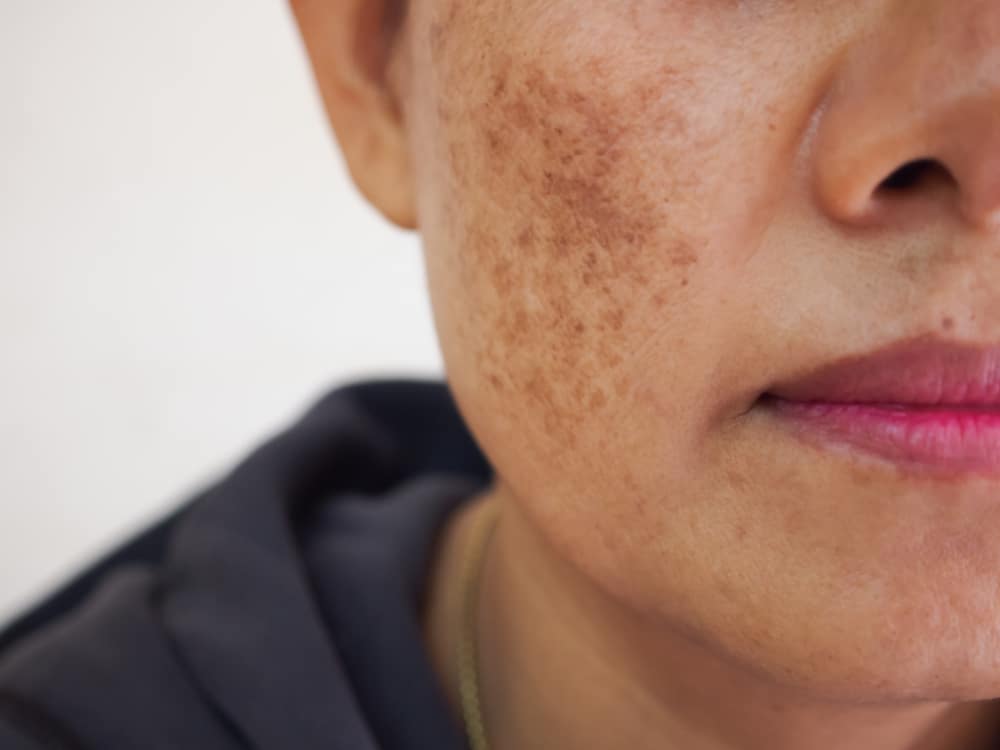Longer days, rising temperatures, and increased time in the sun often bring changes to the skin, especially for those affected by melasma. This condition causes brown or grayish-brown patches to appear on the face, most often on the nose, forehead, cheeks, and upper lip, and it commonly becomes more noticeable during the summer.
Dr. Bertha Baum, a board-certified dermatologist and cosmetic surgeon, completed advanced medical training at Nova Southeastern University and attended specialized courses at Harvard University. With her extensive experience in treating skin conditions across all skin types, she offers valuable insight into managing melasma during the year’s warmest months.
As June marks Melasma Awareness Month, it’s the right time to look at why symptoms often worsen and how to keep flare-ups under control.
What Triggers Melasma?
Melasma develops when melanocytes, the skin cells that produce pigment, become overactive. Several factors can contribute to this increase in pigmentation, including:
- Sun exposure
- Hormonal changes, such as pregnancy or birth control use
- Certain medications
- Genetics and skin type
Sunlight is considered the most influential trigger, as ultraviolet (UV) rays stimulate melanin production and cause existing patches to darken.
Why Summer Causes Flare-Ups
During the summer, people in Aventura and other sunny areas naturally spend more time outdoors. This increased exposure to ultraviolet (UV) rays and visible light often leads to more noticeable melasma flare-ups. In addition to UV exposure, heat itself can worsen pigmentation by triggering inflammation within the skin.
Several common habits during the summer months can further contribute to these flare-ups. Skipping daily sunscreen application allows UV rays to reach and stimulate pigment-producing cells. Using skincare products that irritate or inflame the skin can also exacerbate discoloration, particularly for those with sensitive skin. Additionally, increased sweating due to heat and humidity may lead to more frequent inflammation, making melasma patches appear darker and more widespread.
How to Minimize Summer Melasma Flare-Ups
Effective melasma management starts with consistent protection and gentle skincare. Some helpful strategies include:
- Wearing broad-spectrum sunscreen daily, even on cloudy days
- Reapplying sunscreen every two hours when outdoors
- Wearing wide-brimmed hats and seeking shade when possible
- Avoiding hot environments that can trigger inflammation
For those struggling with persistent melasma, dermatological treatments such as chemical peels, topical lightening agents, or laser therapies may be recommended.
Seasonal Melasma Challenges and Solutions in Aventura, FL
Living in a bright, warm area like Aventura can make it difficult to manage melasma without professional help. If discoloration has worsened with the season or flare-ups have become more frequent, it may be time to seek expert treatment. A board-certified dermatologist such as Dr. Baum can create a personalized plan to reduce pigment, protect your skin, and prevent future flare-ups.
Contact Aventura Dermatology at 754-544-9030 to schedule a consultation and get started on a treatment plan that works for you. Acting early can make a meaningful difference in your results.





